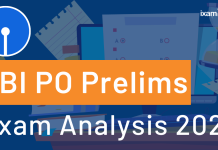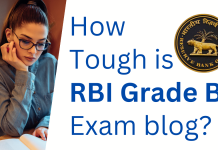What is PFRDA?
The Pension Fund Regulatory and Development Authority or PFRDA as popularly known is a statutory i.e. it derives its power from a ‘Law’ made by Parliament, regulatory body set up under PFRDA Act with an aim to promote old age income security and protect the interests of National Pension System (NPS) subscribers. It was established on 23rd August 2003 by the Government of India to develop, establish and regulate pension funds along with protecting the interest of subscribers to pension funds schemes. The PFRDA, working under the Ministry of Finance, Department of Financial Services is thus ensuring the orderly growth and development of the pension market. The PFRDA headquarter is situated in New Delhi. It is presently headed by Supratim Bandyopadhyay.
PFRDA Vision
With the power to regulate the New Pension System or NPS, PFRDA vision is to be a model regulator for promotion and development of an organized pension system so that it can cater to the old age income needs of people on a sustainable basis.
PFRDA Composition
The PFRDA or Pension Fund Regulatory and Development Authority consists of a Chairperson and not more than six members, of whom at least three shall be whole-time members appointed by the Central Government.
What PFRDA Preamble state?
The Preamble of the Pension Fund Regulatory & Development Authority Act, 2013 describes the basic functions of the PFRDA as –
“To promote old age income security by establishing, developing and regulating pension funds, to protect the interests of subscribers to schemes of pension funds and for matters connected therewith or incidental thereto.”
PFRDA functions
The pension system initially introduced for Government employees only now extended to all citizens of India including non-resident Indians and self-employed persons. The PFRDA is an autonomous body with judicial, legislative and executive powers similar to financial sector regulators like RBI, Securities and Exchange Board of India, Insurance Regulatory and Development Authority (IRDA) etc. Some major functions of PFRDA are listed below-
- Regulate NPS and all other pension schemes to which the PFRDA Act is applicable.
- Establish, develop and regulate pension funds along with protecting the interest of pension fund subscribers.
- It approves schemes, terms, conditions and lay down norms for management of corpus of pension funds.
- It also settles disputes among intermediaries and between intermediaries and subscribers by establishing grievance redressal mechanisms.
- Also, promote professional organisation growth connected with the pension system.
- It also focuses on training intermediaries and educating subscribers and the general public with respect to pension, post retirement savings and related issue
- Also conduct inquiries, investigation and audit of intermediaries and other entities connected with pension funds
Two Major Schemes administered by PFRDA
PFRDA administers and regulates the National Pension System (NPS) as well as Atal Pension Yojana. Let’s have a quick look at what these schemes are all about.
National Pension System or NPS
NPS is a government-sponsored pension scheme, managed by PFRDA. Launched in January 2004 for government employees only it was opened to all sections in 2009. Under the NPS scheme, a subscriber has to contribute regularly in a pension account during his working life. Post retirement, a part of the corpus in a lump sum can be withdrawn by the subscriber and the remaining corpus can be used to buy an annuity to secure a regular income after retirement.
Some Key Features of NPS or National Pension Scheme
Here are some key features of the NPS:
Flexibility: One of the standout features of the NPS is its flexibility. It allows subscribers to choose their own contribution amount and investment strategy based on their risk appetite and financial goals. Subscribers can opt for an auto-choice option, where the investment is managed based on the subscriber’s age, or they can actively manage their own investments from a range of asset classes.
Dual Account Structure: The NPS operates on a dual account structure, consisting of two separate accounts – Tier I and Tier II. The Tier I account is the primary retirement account, which offers tax benefits and has certain restrictions on withdrawal until the subscriber reaches the retirement age. The Tier II account is a voluntary savings account that allows subscribers to withdraw their funds without any restriction.
Tax Benefits: The NPS offers attractive tax benefits, making it an attractive investment option. Contributions made by employees, employers, and even self-employed individuals can be claimed as a tax deduction under Section 80C of the Income Tax Act. Additionally, the NPS provides an additional tax benefit of up to INR 50,000 under Section 80CCD(1B) over and above the regular limit of Section 80C.
Portability: Another noteworthy feature of the NPS is its portability. Subscribers can contribute to and operate their NPS account from any location in the country, irrespective of changes in employment or geography. This portability ensures convenience and control for individuals, allowing them to continue investing in their retirement savings without any disruptions.
Annuity Options: At the time of retirement, subscribers have the option to utilize their accumulated corpus to purchase a life annuity from an annuity service provider registered with the Insurance Regulatory and Development Authority of India (IRDAI). The NPS offers multiple annuity options, enabling individuals to choose the one that best suits their retirement needs and provides a regular income stream.
Atal Pension Yojana
Atal Pension Yojana was launched on 9th May 2015, to create a universal social security system for all Indians, mainly focussing on the poor, the underprivileged and the unorganised sector workers. The scheme is administered by the Pension Fund Regulatory and Development Authority through the National Pension System (NPS).
Some Key Features of Atal Pension Yojana
- Any Indian citizen between 18-40 years can join the scheme.
- The contribution level varies and is low if a subscriber joins early and increases if she joins late.
- A minimum guaranteed pension ranging from Rs 1000 to Rs 5000 is provided on attaining 60 years of age.
- The pension amount is guaranteed for a lifetime to the spouse on the death of the subscriber and the entire pension corpus is paid to the nominee, in case of death of both the subscriber and the spouse.
Also Read
Get Free Online Test Series, GK updates in form of Beepedia, BeeBooster, as well as latest updates for Bank PO, Bank Clerk, SSC, RBI, NABARD and Other Government Jobs.
быстрый займ денег москваоформить займ екапустазайм на карту онлайн по паспорту
















Simply explained